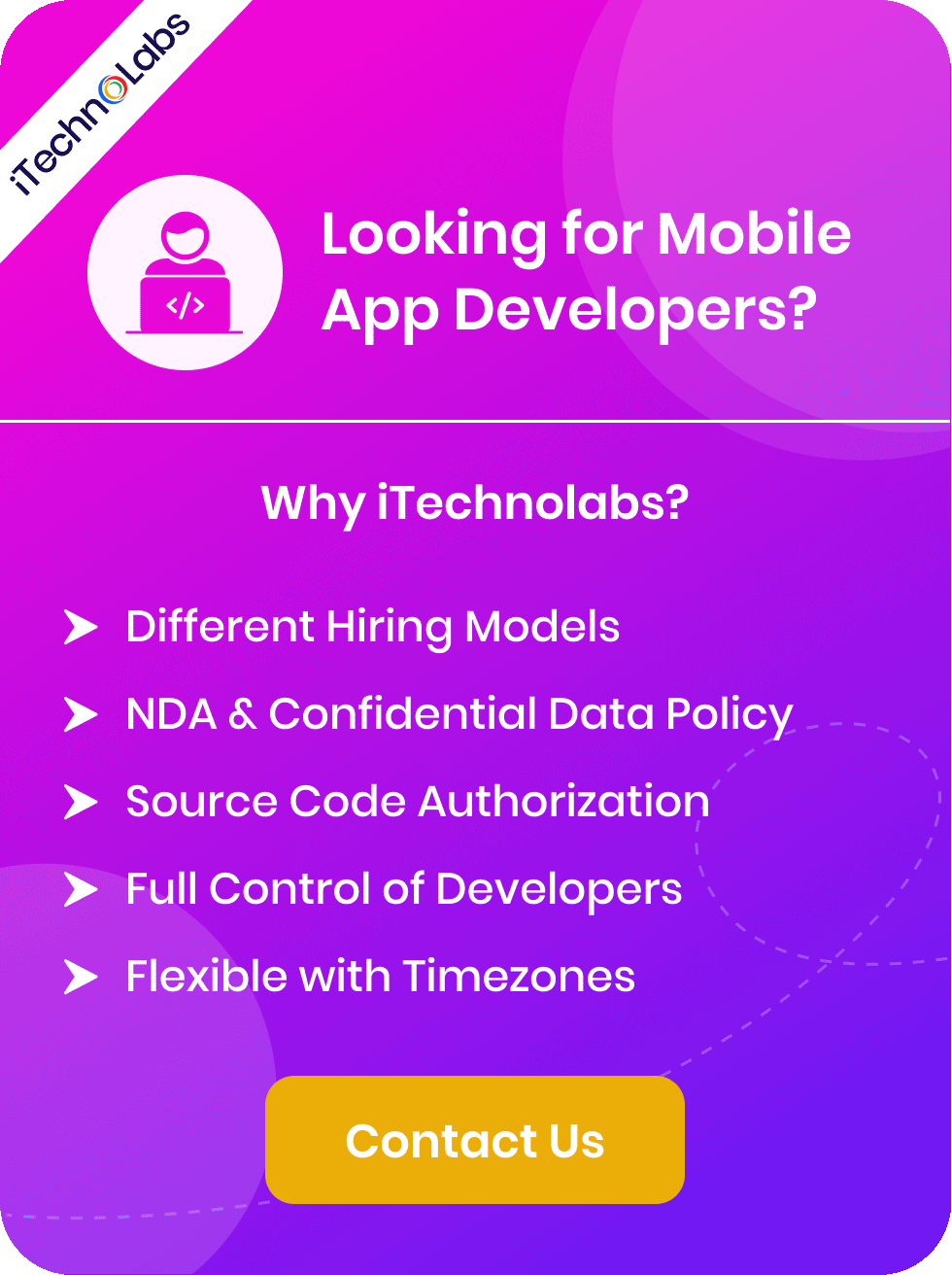Artificial General Intelligence (AGI) is a field of research that aims to create intelligent machines or software programs capable of performing any intellectual task that a human being can. This means that an AGI system would possess the ability to understand and learn any kind of information, reason logically, plan effectively, solve complex problems, communicate seamlessly with others, and adapt to new environments and situations.
Researchers in this field strive to replicate the full range of human cognitive abilities, including emotional intelligence and creativity. They are dedicated to understanding the intricate workings of the human brain and translating those mechanisms into computational models. This involves a deep dive into various domains such as natural language processing, computer vision, robotics, and neural networks, among others.
The ultimate goal is to develop machines that can operate autonomously in a wide variety of settings, making decisions and taking actions that are indistinguishable from those of humans. Such advancements have the potential to revolutionize numerous industries, from healthcare and education to transportation and entertainment. However, this ambitious pursuit also brings along significant ethical and societal concerns. Ensuring that AGI systems are developed responsibly and with appropriate safeguards is paramount to prevent unintended consequences.
What is Artificial General Intelligence?
Artificial General Intelligence (AGI) is a branch of artificial intelligence that focuses on creating machines or software programs with human-like cognitive abilities. Unlike narrow AI, which is designed to excel at specific tasks such as language translation or image recognition, AGI aims to replicate the full range of human intelligence and capabilities. This comprehensive replication includes understanding natural language, reasoning, problem-solving, learning from experience, and adapting to new situations.
The ultimate goal of AGI is to create systems that can perform any intellectual task that a human can. This ambitious objective has the potential to revolutionize numerous industries, from healthcare, where AGI could assist in diagnosing complex medical conditions and personalizing treatment plans, to education, where it could offer highly adaptive learning experiences tailored to individual needs.
In addition to transforming industries, AGI could profoundly impact society by addressing some of the world’s most pressing challenges. For instance, AGI could contribute to climate change solutions through advanced data analysis and predictive modeling, or assist in tackling global poverty by optimizing resource distribution and economic planning.
While the development of AGI is still in its early stages, it holds the promise of unlocking unprecedented advancements in technology and knowledge. Researchers and technologists are continually working to overcome the numerous scientific, ethical, and technical challenges that lie ahead. As progress continues, the potential benefits of AGI make it one of the most exciting and transformative fields of study in the modern era.
Also Read: 60 AI Statistics and Global Trends on Artificial Intelligence
Top 10 Current Trends and Future Prospects of AGI
1. Metaverse Integration
With the rise of virtual and augmented reality technologies, there is a growing interest in integrating Artificial General Intelligence (AGI) with the metaverse. This integration would enable intelligent agents to interact with users in immersive virtual environments, providing experiences that are not only more dynamic but also more realistic. For instance, AGI could enhance virtual training programs by simulating real-world scenarios, offer personalized virtual assistants that adapt to user preferences, and even create complex virtual societies. The possibilities are vast, and this fusion of technologies could revolutionize how we engage with digital worlds, making them more interactive and lifelike than ever before.
2. Conversational AI Chatbots and Assistants
One of the most significant developments in AGI is the advancement of conversational AI chatbots and assistants. These intelligent agents are designed to communicate with humans in natural language, making them more accessible and user-friendly than traditional computer interfaces. They can assist with tasks such as scheduling appointments, answering customer inquiries, or even providing emotional support through conversation. For instance, a busy professional can rely on a virtual assistant to manage their calendar, send reminders for important meetings, and even book travel arrangements, thus saving time and reducing stress. In customer service, chatbots can handle a wide range of inquiries, from providing product information to troubleshooting common issues, thereby improving efficiency and customer satisfaction. Emotional support chatbots, on the other hand, are being developed to offer companionship and mental health support, engaging users in meaningful conversations to reduce feelings of loneliness and anxiety.
3. Quantum AI
Quantum computing is another rapidly advancing field that has the potential to greatly enhance AGI capabilities. Unlike traditional computers that store and process information in binary digits (bits), quantum computers use qubits, which can exist in multiple states simultaneously. This allows them to perform complex calculations much faster than traditional computers and solve problems that would take years or even centuries for a regular computer to complete. This speed and processing power could greatly benefit AGI by allowing it to analyze vast amounts of data at unprecedented speeds and make more accurate predictions and decisions. Quantum AI also has the potential to improve natural language processing, making conversations with chatbots and virtual assistants even more fluid and human-like. As quantum computing continues to advance, so will the potential of AGI and its applications in various fields.
4. Rise in No-code or Low-code AI Development
The development of AI has traditionally been a complex and time-consuming process, requiring highly specialized skills in fields such as data science, machine learning, and programming. However, recent developments have led to the rise of no-code or low-code AI development platforms that allow individuals with little to no coding knowledge to build and deploy AI models. These platforms use intuitive drag-and-drop interfaces and pre-built algorithms to make it easier for non-technical users to create custom AI solutions. This democratization of AI development could lead to wider adoption of AGI in various industries, as businesses and organizations can now develop their own tailored AI solutions without the need for a dedicated team of experts.
5. NLP Development for AGI
One of the key components of Artificial General Intelligence (AGI) is its ability to understand and process natural language. Natural Language Processing (NLP) is a specialized area of AI that focuses on enabling machines to interpret and respond to human language, both written and spoken, in a way that is meaningful and contextually appropriate. NLP involves various subfields, including speech recognition, language generation, sentiment analysis, and machine translation, each contributing to the overall goal of seamless communication between humans and machines.
As NLP technology continues to improve, so will the capabilities of AGI in terms of communication and interaction with humans. This could lead to significant advancements in chatbots, virtual assistants, and other AI systems that can understand and respond to complex human queries. Enhanced NLP capabilities would make these systems more intuitive, context-aware, and capable of handling a broader range of conversational topics, thus making them more useful and reliable in various applications such as customer service, healthcare, education, and entertainment.
Moreover, the integration of advanced NLP in AGI could pave the way for more sophisticated forms of human-computer interaction, where machines could not only perform tasks based on commands but also engage in meaningful dialogue, provide emotional support, and even understand cultural nuances. This would represent a major leap forward in the development of AI, bringing us closer to a future where machines can truly understand and interact with us on a human level.
6. Hyper Automation
Hyper automation, also known as intelligent process automation or software robotics, is the combination of multiple technologies such as AI, machine learning, and robotic process automation (RPA) to automate complex business processes. This involves automating not just repetitive tasks but also decision-making and problem-solving capabilities that were previously exclusive to humans.
With hyper-automation, businesses can achieve significant improvements in efficiency, accuracy, and scalability by reducing manual labor and human error. It can also free up employees’ time to focus on more critical tasks that require creativity and strategic thinking. As this technology continues to evolve and mature, it has the potential to revolutionize industries such as finance, healthcare, and manufacturing.
7. Workforce Augmentation
Workforce augmentation refers to the use of AI technologies to enhance and complement human workers rather than replace them. This approach acknowledges that humans have unique skills and capabilities that cannot be replicated by machines, and seeks to combine these strengths with those of AI.
One example of workforce augmentation is the use of chatbots in customer service. While they can handle routine inquiries efficiently, complex and emotionally charged issues are still best resolved by a human agent. By working together, both parties can provide a better overall experience for the customer.
8. Ethical Considerations
As AI technology becomes more prevalent in various industries, there are growing concerns about the ethical implications of its use. These range from potential job displacement to biased decision-making and invasion of privacy.
To address these concerns, businesses must prioritize ethical practices and transparency when implementing AI systems. This includes careful consideration of the data used to train algorithms, accountability for their decisions, and ensuring they do not perpetuate discrimination or harm individuals.
9. Increased security risks
As AI technology becomes more advanced and integrated into various systems, it also brings new security risks that must be carefully managed. For instance, cybercriminals can exploit vulnerabilities in AI algorithms to manipulate or sabotage systems, causing significant disruptions and potential financial losses. These vulnerabilities could range from data poisoning attacks, where the input data is altered to mislead the AI, to model theft, where proprietary AI models are copied and misused.
To combat these threats, businesses must implement robust security measures and conduct regular audits of their AI systems. This includes ensuring that the data used is secure and protected against unauthorized access through encryption and other protective measures. Additionally, businesses should employ techniques like adversarial testing to identify and rectify potential weaknesses in their AI models. Continuously monitoring for any anomalous activity is crucial, as early detection can prevent minor issues from escalating into major incidents. Investing in employee training on AI security practices and staying updated on the latest cybersecurity trends can further bolster defenses against these emerging threats.
10. AI-based Hiring Process
One area where the use of AI has been rapidly increasing is in the hiring process. Companies are turning to AI-powered tools and algorithms to screen resumes, conduct interviews, and make hiring decisions. While this can save time and resources for businesses, it also raises concerns about potential bias and discrimination.
AI systems are only as unbiased as the data they are trained on. If training data sets contain inherent biases or inequalities, these will inevitably be reflected in the decisions made by AI algorithms. This can result in discriminatory practices against certain groups of individuals, such as people of color or those from lower-income backgrounds.
Read More: Top 10 AI Apps in the USA
The Evolution of AGI: From Concept to Reality
The idea of AGI, or artificial general intelligence, has been around for decades. It refers to AI systems that possess human-like intelligence and abilities, such as problem-solving, creativity, and self-awareness. While current AI technology is impressive, it cannot still replicate these complex human capabilities.
However, researchers and scientists have been making significant progress in the development of AGI. Breakthroughs in deep learning and neural networks have brought us closer to creating more advanced AI systems with the potential for generalized intelligence. Experts predict that we may see the emergence of AGI within our lifetimes.
1950s: Foundational Neural Network Algorithms
The concept of neural networks – a type of machine learning model inspired by the structure and function of the human brain – was first introduced in the 1950s. This groundbreaking idea was pivotal in the field of artificial intelligence, as it laid the foundation for future advancements in AI technology. Over the decades, neural networks have evolved significantly, enabling the development of more sophisticated algorithms capable of complex tasks such as image and speech recognition, autonomous driving, and language translation. The continuous improvement and application of neural networks have opened up new possibilities and driven innovation across various industries.
1960s-1970s: Deliberative Reasoning Hypotheses
During this period, researchers explored the idea of AGI through the development of logical reasoning systems. These early AI systems were programmed with rules and logic to solve problems by breaking them down into smaller, more manageable tasks. For example, they could handle mathematical theorems or play strategy games by meticulously following a set of predefined instructions. While these approaches showed promise in specific domains, such as chess or simple scheduling tasks, they lacked the flexibility and adaptability necessary for generalized intelligence. The systems struggled with anything unforeseen or that required intuitive understanding, highlighting the limitations of rule-based AI in achieving true AGI.
1980s-1990s: Mathematical General Intelligence Definitions
In the 1980s and 1990s, researchers began to focus on mathematical definitions of intelligence, such as Douglas Lenat’s “Cyc” project, which aimed to create a database of common sense knowledge that could be used by AI systems. This approach was more data-driven, with the belief that providing enough information would enable machines to make intelligent decisions. However, this proved challenging as it required vast amounts of data and complex algorithms to process it effectively. While these efforts made significant strides in fields like natural language processing and robotics, they still fell short in achieving true AGI.
2000s-2010s: Engineering Specialized AI Capabilities
With the rise of big data and machine learning in the 2000s, researchers shifted their focus towards creating specialized AI systems that could excel at specific tasks. These systems were trained on large datasets, often comprising millions of examples, and could learn patterns and make decisions without explicit programming or rules. This led to significant advancements in areas like image recognition, where AI could identify objects and faces in photos with remarkable accuracy; speech recognition, which enabled voice-activated assistants to understand and respond to human commands; and natural language processing, allowing machines to comprehend and generate human language more effectively.
Despite these impressive capabilities, these AI systems still had notable limitations. They were highly dependent on the quality and quantity of their training data, and their performance tended to degrade when faced with new or unanticipated situations. Moreover, these systems lacked the ability to generalize knowledge beyond their specific training data, meaning they could not easily apply learned concepts to different contexts. This highlighted an ongoing challenge in the field of AI: developing systems that not only perform well in narrow domains but also possess the flexibility and adaptability of human intelligence.
2020s: Large Language Models and Ethical Concerns
The 2020s saw a significant breakthrough in AI with the emergence of large language models, such as GPT-3 (Generative Pre-trained Transformer), which contained billions of parameters and could generate human-like text with impressive coherence and fluency. These models were trained on massive amounts of data, including books, articles, and websites, allowing them to learn a vast range of knowledge and language patterns.
While these advancements have shown great potential for natural language processing tasks, they also raised concerns about the ethical implications of such powerful AI systems. Large language models have been criticized for perpetuating biases present in their training data, as well as potentially being used to spread misinformation and manipulate public opinion. This has sparked discussions about the need for responsible and ethical development of AI technologies.
Ongoing: Pathways on Broad Capabilities
As AI continues to advance and become more integrated into our daily lives, there are ongoing discussions about the best approach for developing broad capabilities in these systems. Some argue that we should focus on building specialized AI that can perform specific tasks extremely well, while others advocate for a more holistic approach that seeks to mimic human intelligence.
One potential pathway is through the development of cognitive architectures, which aim to create general-purpose intelligent agents capable of reasoning, learning, and adapting to new situations. Another pathway is through the combination of artificial neural networks and symbolic reasoning, which seeks to combine both statistical learning models and logical rules for more robust and adaptable systems.
What are the Types of AGI?
AGI, or artificial general intelligence, refers to AI systems that possess the ability to understand and solve a wide range of tasks like human intelligence. There are several different approaches and types of AGI being explored by researchers and developers.
1. Symbolic AI
Symbolic AI, also known as classical or rule-based AI, is based on the idea of using logical rules and symbols to represent knowledge and solve problems. These systems are typically programmed by humans with a set of rules and logic that dictate how they should respond to different inputs. This approach relies heavily on human expertise to define the rules and requires extensive knowledge engineering to cover a wide range of scenarios. While symbolic AI can be very effective in well-defined domains with clear rules, it often struggles with ambiguity and the complexity of real-world situations where rules may not be easily defined or may change over time.
2. Hybrid AI
As the name suggests, hybrid AI combines multiple approaches to create more powerful and flexible AGI systems. This often involves combining symbolic AI with other techniques such as machine learning or neural networks. By using a combination of rule-based reasoning and statistical learning, hybrid AGI systems can be more adaptable, able to handle both well-defined tasks and ambiguous situations.
3. Emergentist AI
Emergentist AI, also known as connectionist or neural network-based AGI, is based on the idea of modeling intelligence after the human brain. These systems use layers of interconnected nodes (similar to neurons in the brain) to process information and learn from data. Unlike symbolic AI, which relies on predefined rules, emergentist AI learns through experience and can adapt to new situations without requiring explicit programming. However, these systems often struggle with explainability, making it difficult for humans to understand how they reach their decisions.
4. Universalist AI
Universalist AI is the pursuit of creating truly general or universal AGI systems that can perform any intellectual task that a human can. This approach takes inspiration from the Turing test, which tests a machine’s ability to exhibit intelligent behavior indistinguishable from that of a human. While this type of AGI is still largely theoretical, it holds great potential for tackling complex and diverse tasks.
5. Whole Organism Architecture
The whole organism architecture is a relatively new approach to creating AGI systems, taking inspiration from the structure and functioning of biological organisms. This involves designing AGIs with a central control system that regulates different specialized parts or modules, similar to how the brain controls different organs in the human body. The goal of this approach is to create more autonomous and adaptable AGI systems.
What is the Difference Between Artificial Intelligence and Artificial General Intelligence?
Artificial intelligence (AI) is a broad term that encompasses any computer or machine system that can perform tasks that typically require human intelligence, such as learning, problem-solving, and decision-making. It includes a wide variety of techniques and approaches, including machine learning, natural language processing, and computer vision.
On the other hand, artificial general intelligence (AGI) refers to AI systems that are capable of performing any intellectual task that a human can. This means being able to understand and learn from different types of information, adapting to new situations and challenges without explicit programming, and exhibiting creativity and common sense.
In simpler terms, AI is focused on solving specific problems or performing specific tasks, while AGI aims to replicate the broad and adaptable capabilities of human intelligence. While AI systems are already widely used in various industries, AGI remains a largely theoretical concept with ongoing research and development efforts. Ultimately, the goal of achieving AGI is to create truly autonomous and versatile machines that can assist humans in tackling complex challenges and advancing society as a whole.
Five Major Challenges of AGI Development
Developing AGI is a complex and multifaceted endeavor, and several key challenges must be addressed to achieve this goal. Some of the major challenges include:
1. Complexity and Diversity of Human Intelligence
One of the biggest challenges of AGI (Artificial General Intelligence) development is replicating the complexity and diversity of human intelligence. Unlike narrow AI, which excels in specific tasks, AGI aims to perform any intellectual task that a human can. Human intelligence is not a singular entity but a combination of various cognitive abilities such as reasoning, creativity, memory, and emotion. Each of these abilities interacts with one another in intricate ways to produce what we recognize as intelligent behavior. Creating an AI system that can mimic all these capabilities in a unified and coherent manner is no small feat. It requires not only advanced algorithms and immense computational power but also a deep understanding of the human mind. Researchers must tackle challenges such as building emotional understanding, contextual awareness, and the ability to transfer learning across different domains. Achieving AGI involves overcoming numerous technical and philosophical hurdles, making it one of the most ambitious and complex endeavors in the field of artificial intelligence.
2. Ethical Considerations
As AI technology becomes more advanced, ethical considerations become increasingly important. With AGI, there are concerns about the potential impact on society and humanity as a whole. Some experts believe that creating an AGI could lead to unintended consequences or even pose an existential threat to humanity if not properly managed. This has sparked discussions about implementing safety measures and regulations to ensure responsible development and deployment of AGI systems. There are also questions surrounding the ethical implications of granting human-like rights or personhood status to intelligent machines.
3. Technological Limitations
Despite the tremendous progress in AI research and development, there are still many technological limitations that need to be addressed before achieving AGI. One major challenge is creating a system that can learn and adapt to new situations without explicit programming. Another hurdle is developing robust and efficient algorithms for handling vast amounts of diverse data. There are also concerns about the reliability and security of AGI systems, as their decisions could have significant real-world consequences.
4. Uncertainty and Philosophical Questions
The pursuit of AGI (Artificial General Intelligence) raises profound philosophical questions about the nature of intelligence and consciousness. Many experts argue that creating a truly intelligent machine would require a deep understanding of these fundamental aspects of human cognition, which remains elusive. The complexity of human thought processes, emotions, and subjective experience is still not fully understood. Some also question whether it is possible to create an artificial entity with true consciousness or if machines can ever develop self-awareness. This leads to further ethical considerations about the rights and treatment of potentially sentient machines, as well as the implications for society if AGI were to surpass human intelligence. The debate continues to evolve as advancements in AI technology progress, but the ultimate answers to these philosophical inquiries are still far from clear.
5. Learning and Adaptation
One of the defining characteristics of true intelligence is the ability to learn and adapt to new situations. While current AI systems excel at performing specific tasks, they struggle with generalizing their knowledge to new scenarios. This is a critical challenge in creating AGI, as it requires machines to continuously learn from their experiences and apply that knowledge in novel ways. Researchers are exploring different approaches such as reinforcement learning, where machines can improve through trial and error, or transfer learning, where they can use previously learned information for new tasks. However, achieving human-like learning abilities remains a significant obstacle on the path towards AGI.
Opportunities in AGI Development
Despite the challenges and uncertainties surrounding Artificial General Intelligence (AGI), its potential benefits are driving significant research and development efforts across the globe. The creation of a machine with human-like intelligence could revolutionize many industries, from healthcare and transportation to finance and entertainment. For instance, in healthcare, AGI could lead to better diagnostic tools, personalized treatment plans, and advancements in medical research. In transportation, it could facilitate the development of highly efficient autonomous vehicles, reducing accidents and traffic congestion.
Moreover, AGI could also lead to breakthroughs in various scientific fields by analyzing vast amounts of data and making connections that humans may miss, thus accelerating discoveries in areas such as climate science, genomics, and space exploration. Additionally, AGI has the potential to free humanity from mundane and repetitive tasks, allowing us to focus on more creative and fulfilling pursuits. This shift could lead to a renaissance of innovation and creativity, as people have more time and mental energy to engage in artistic, intellectual, and entrepreneurial activities.
While the path to achieving AGI is fraught with technical, ethical, and societal challenges, the transformative impact it promises makes it a highly compelling area of study and investment.
Bridging the Gap Between Artificial and Human Intelligence
One of the main goals of AGI development is to bridge the gap between artificial and human intelligence. Machines excel at processing large amounts of data, but they lack the intuition, creativity, and adaptability that humans possess. On the other hand, humans have limited processing power compared to machines, but we have advanced cognitive abilities such as empathy, reasoning, and self-awareness.
Impact of AGI on Various Industries and Sectors
The potential impact of AGI reaches far beyond the fields of medicine, transportation, and science. It has the potential to revolutionize industries such as finance, education, manufacturing, agriculture, and more.
1. Healthcare
In the healthcare industry, AGI could assist in diagnosing diseases and identifying effective treatments by analyzing genetic data, medical records, and research findings. By leveraging vast amounts of data, AGI systems can uncover patterns and correlations that might be missed by human doctors. This could lead to personalized and more accurate medical care for patients, improving outcomes and potentially reducing the costs associated with misdiagnoses and ineffective treatments. Additionally, AGI’s ability to stay updated with the latest medical research ensures that patients receive the most current and effective care available.
2. Retail
AGI has the potential to revolutionize the retail industry by enhancing consumer experience, improving supply chain management, and optimizing inventory management. By analyzing customer data and behavior patterns, AGI systems can create personalized shopping experiences tailored to each individual’s preferences. This can lead to increased customer satisfaction and loyalty. In addition, with advanced predictive capabilities, AGI can help retailers optimize their supply chain operations by forecasting demand and adjusting inventories accordingly.
3. Finance
The finance industry is another sector that could greatly benefit from the introduction of AGI. AGI systems can analyze vast amounts of financial data and market trends to make more accurate predictions and assist in making investment decisions. This could potentially reduce human errors and improve returns for investors. Moreover, with the integration of natural language processing capabilities, AGI systems can also provide personalized financial advice and support to customers.
4. Manufacturing
AGI has the potential to transform manufacturing processes by making them more efficient, precise, and adaptive. With AGI’s ability to analyze data from sensors and machines in real time, manufacturers can optimize production schedules, predict equipment failures, and improve overall efficiency. Additionally, AGI-powered robots can perform complex tasks with precision and speed, reducing human errors and increasing productivity.
5. Education
AGI can also revolutionize the education industry by providing personalized learning experiences for students. By analyzing students’ performance data and learning styles, AGI systems can create customized learning plans tailored to each individual’s needs. This could lead to improved student outcomes and a more engaging and efficient learning environment.
6. Transportation
The transportation industry could also see significant advancements with the integration of AGI. Self-driving cars powered by AGI could potentially reduce accidents and improve traffic flow, leading to safer and more efficient transportation systems. Furthermore, AGI can assist in optimizing route planning for logistics companies, reducing delivery times and costs.
The Role of AGI in Shaping the Future of Humanity
AGI has the potential to greatly impact and shape the future of humanity. With its advanced capabilities, AGI can improve various industries, enhance productivity, and potentially lead to groundbreaking discoveries. However, it is crucial to consider the ethical implications of this technology and ensure responsible development and usage.
One major concern with AGI is the potential displacement of human workers as tasks become automated. This raises questions about job security and income inequality in a society where machines are capable of performing complex tasks better than humans. Policymakers and businesses need to address these issues proactively and create solutions for a smooth transition as automation becomes more prevalent.
Another ethical concern is the potential for AGI to be used for malicious purposes. It is essential to establish regulations and safeguards to prevent the misuse of this technology. Additionally, there should be ongoing discussions and debates on the ethics of creating machines with human-like intelligence and whether they could potentially possess consciousness or emotions.
Important: How Much Does It Cost To Build an Artificial Intelligence Project
How can iTechnolabs help you to build Artificial General Intelligence?
iTechnolabs, as a leading research and development company, plays a crucial role in the advancement of AGI. With our expertise in artificial intelligence and deep learning, we can assist in developing algorithms and models for AGI systems. Our team of experts also has extensive experience in data processing and analysis, which are essential components for creating intelligent machines.
Moreover, at iTechnolabs, we prioritize ethical considerations in all our projects. We believe that responsible development is vital to ensuring the positive impact of AGI on humanity. Therefore, we adhere to strict ethical guidelines and continuously evaluate the potential societal implications of our work.
- Expertise in AI and Deep Learning: Our team excels in developing sophisticated algorithms and models essential for AGI systems.
- Data Processing and Analysis: We have extensive experience in handling vast amounts of data, a critical factor in building intelligent machines.
- Cutting-Edge Research: iTechnolabs is at the forefront of AGI research, leveraging the latest advancements to push the boundaries of what is possible.
- Ethical Development: We adhere to strict ethical guidelines to ensure that our AGI projects positively impact humanity.
- Custom Solutions: Our tailored approaches meet the specific needs of our clients, ensuring that each AGI solution is unique and effective.
- Collaboration and Support: We provide ongoing support and work closely with our clients to ensure the successful implementation and integration of AGI technologies.
Are you planning to build artificial general intelligence?
Contact us!
Our team of highly skilled experts leverages the latest advancements in AI technology to deliver cutting-edge solutions. We prioritize innovation, efficiency, and reliability in every project, ensuring that our clients receive the best possible results. Additionally, our collaborative approach means that we work closely with you to fully understand and meet your specific needs and objectives, making your journey toward AGI development a seamless and rewarding experience.
- Unparalleled Expertise: Our team of seasoned professionals in artificial intelligence and deep learning is dedicated to crafting sophisticated algorithms and models tailored for AGI systems. Their extensive knowledge ensures that we stay ahead of the curve in the ever-evolving field of AI.
- Advanced Data Handling: Understanding that data is the bedrock of any AI system, our expertise in data processing and analysis guarantees efficient handling of vast datasets. This capability is crucial for training AGI systems to learn and adapt accurately.
- Innovative Research: At iTechnolabs, we are consistently at the cutting edge of AGI research. We leverage the latest technological advancements to push the boundaries of what AGI can achieve, ensuring our clients benefit from the most recent developments in the field.
- Ethical Responsibility: We prioritize ethical considerations with unwavering dedication. Our adherence to strict ethical guidelines ensures that our AGI developments are designed to benefit humanity, minimizing any potential risks associated with AGI implementation.
- Tailored Solutions: We recognize that every client has unique challenges and requirements. Our ability to provide customized AGI solutions ensures a perfect fit for each client’s specific needs, enhancing the overall effectiveness of our implementations.
- Collaborative Approach: Our commitment to ongoing support and collaboration ensures that our clients are not just customers but partners. We work closely with them throughout the development and integration process to ensure the successful deployment of AGI technologies.
Conclusion:
In conclusion, iTechnolabs is at the forefront of the AGI revolution, providing cutting-edge solutions that push the boundaries of what AI can achieve. Our team’s expertise in advanced data handling ensures that we can process and analyze massive datasets with unparalleled efficiency. Our innovative research drives the development of new algorithms and models that continuously improve performance and capabilities. We prioritize ethical responsibility, ensuring that our technologies are developed and deployed in ways that benefit society as a whole.
FAQ’s: Artificial General Intelligence
Q.1 How Far Away Are We From AGI?
Current advancements in machine learning and artificial intelligence have brought us closer to artificial general intelligence (AGI) than ever before. These technologies are evolving rapidly, with breakthroughs in neural networks, natural language processing, and data analytics driving significant progress. However, experts estimate that we are still several decades away from achieving true AGI capabilities. This is due to the immense complexity involved in replicating human-like cognition, reasoning, and understanding at a machine level. Despite the progress, the journey towards AGI remains a challenging and intricate endeavor, requiring ongoing research and collaboration across multiple domains.
Q.2 What is an AGI vs AI?
An artificial general intelligence (AGI) system is an advanced form of artificial intelligence (AI) that can perform a wide range of intellectual tasks at a human level or beyond. AGI aims to mimic human intelligence, including the ability to reason, learn, plan, and adapt to new situations autonomously. In contrast, traditional AI systems are designed for specific tasks and lack the generality and flexibility of AGI. They require precise instructions on what actions to take in particular scenarios, limiting their overall abilities outside their designated area of expertise.
Q.3 Will AI Take Over Humanity?
The concept of AI taking over humanity has been popularized in science fiction and media, but it remains just that – a work of fiction. While the rapid advancements in AI technologies have led to concerns about its potential impact on society and employment, experts agree that it is unlikely for machines to gain complete control over humans. AGI systems are designed to assist humans and replicate their cognitive abilities, not surpass or replace them entirely. Furthermore, ethical guidelines and regulations are being developed to ensure responsible development and deployment of AGI technologies.
Q.4 What are Some Examples of Artificial General Intelligence?
Some notable examples of AGI include IBM’s Watson, Google’s DeepMind AlphaGo, and OpenAI’s GPT-3. These systems have demonstrated capabilities beyond their primary functions and have shown potential for autonomous learning and decision-making. However, they still lack the breadth and depth of human intelligence, making it challenging to achieve true AGI. Other ongoing research projects in AGI include Neuromorphic Computing, Evolutionary Computation, and Cognitive Architectures.
Q.5 Can AI Read Your Mind?
AI technologies can interpret and analyze brain signals, but they cannot read minds in the traditional sense. Brain-computer interface (BCI) systems use machine learning algorithms to decode brain activity and translate it into commands or actions. While this technology has shown promise in controlling prosthetic devices and aiding people with disabilities, it is still limited by our understanding of the human brain. AI may one day be able to simulate thoughts and emotions, but true mind-reading capabilities remain in the realm of science fiction.






